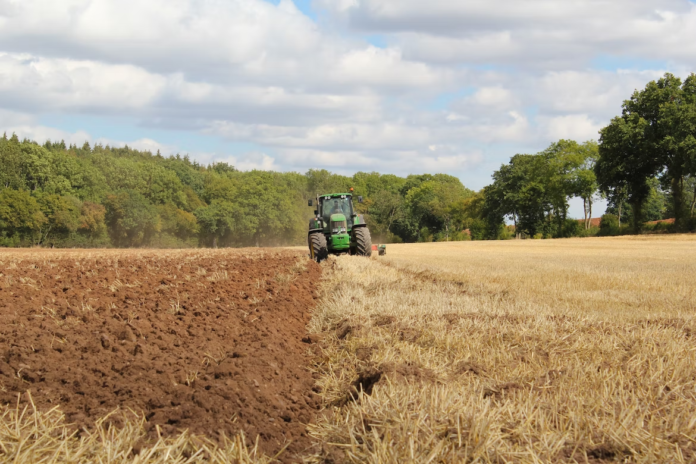Agriculture has played a significant role in the development of human civilization. Over the years, tech advancements altered agricultural processes. Various tools have made farming much simpler and more efficient. Due to mechanization, crop yields have risen over the years. Now you have specialized equipment catering to all kinds of crops and conditions.
The amount of labor working in agriculture has also gone down. According to data from Statista, 43.8% of total employment in Africa was in agriculture in 2020, a significantly lower trend compared to 2010 when 49.3% of total employment was in agriculture.
Over the coming years, this trend is going to continue, as more and more workers are moving into the service industry. The low number of workers available for the same amount of farmland requires more agricultural equipment to take over many processes requiring manual labor.
Agricultural equipment maintenance
As workforce participation in farming decreases, the use of agricultural equipment will play a prominent role. You will need to ensure optimal performance and long life from your equipment to increase the return on investment. For achieving these goals, effective maintenance of agricultural equipment is critical.
Imagine your crops are ripe for harvesting, but the harvester you need does not work. Reactive maintenance procedures will take up an indeterminate amount of time, and you will have to arrange for another machine to harvest the crop in time. This is costly and will cause significant pain for your business.
Well-maintained equipment ensures that such mishaps don’t happen. Farm maintenance ensures machine availability and optimum performance at the right time. Regular maintenance helps to reduce the wear and tear experienced by equipment. You will not need to replace parts regularly. Less unexpected downtime is also a benefit of improved productivity of farm maintenance.
A farm maintenance plan helps to systematize all the maintenance activities. It helps to perform preventive maintenance activities diligently.
Maintenance plans help to schedule tasks regularly, allowing you to bring regularity to maintenance activities. It also helps to make equipment maintenance a core and essential activity on your farm.
Optimizing maintenance schedule
Maintenance schedules give a proper structure to maintenance activities on a farm. Weekly maintenance activities are the pillars of this structure. Once you have created a maintenance plan, you should continually optimize the schedule. You will come across various aspects of maintenance that you might not have accounted for. The following sections cover how you can identify and work around weaknesses to optimize the weekly maintenance schedule.
Monitor
You need to keep an eye on the maintenance performed according to schedule. Keeping a record of the maintenance activities performed and the outcome of such activities is essential. This gives you an idea of how well you follow the schedule. The elaborate data collection also points towards schedule deficiencies and conflicts.
Ideally, you are using CMMS software for maintenance. Such software solutions help you track and record maintenance activities on your farm. Those also help to make the analysis easier. Consider using a software solution – it helps to streamline your processes and makes monitoring easier.
Prioritize
You need to have an experienced team to analyze and monitor the information to generate actionable insights. The team must have experience with farm and maintenance activities. Long-term employees are ideal recruits for this team.
The insights will give many avenues for improvement. Prioritize these according to the importance of your farm. You might have included some activities in the weekly schedule that need not have such a high frequency. You might also identify some activities in the monthly schedule that need more attention. Similarly, prioritize all the maintenance activities on the farm.
Reinvent
Once you have identified the deficiencies and prioritized them, the next step is to create a new schedule – account for the results from the previous steps. Layout the activities Gantt chart to see if there are any conflicts in the new schedule.
Assign a maintenance operator for each of the tasks. If they are assigned overlapping tasks, try to recreate the schedule to accommodate the changes required. You also need to consult with the maintenance team to understand their concerns. If they have any grave concerns, you need to address them before finalizing the new schedule. It is also wise to have a trial run to check if the new schedule is viable and does not leave any gaps in farm maintenance activities.
Optimization: A continuous process
Regular maintenance of agricultural equipment is important for the smooth operation of your farm. A well-designed maintenance schedule ensures no maintenance activity falls through the crack.
The maintenance schedule you create is not set in stone. You will find that it needs improvement when practiced in reality. Optimize the processes to fit the new findings and understand maintenance requirements.
Farm operations and maintenance need to follow the philosophy of ‘Kaizen’. It is the philosophy of adopting continuous improvement in the production process. The same can be applied to farm production and maintenance. There is always a chance to improve the processes and you shall pursue them with a consistent effort to improve the productivity of your farm.

Bryan Christiansen is the founder and CEO of Limble CMMS. Limble is a modern, easy-to-use mobile CMMS software that takes the stress and chaos out of maintenance by helping managers organize, automate, and streamline their maintenance operations.









